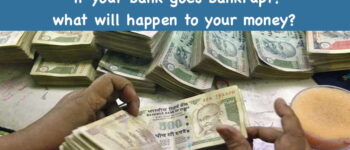Stagflation is an economic condition when the economy experiences stagnant economic growth, high unemployment and high inflation. Stagflation is often happened by a supply-side shock. Know more about the definition of Stagflation, the Reasons of Stagflation, and how to control Stagflation.
If you like this article then please like us on Facebook so that you can get our updates in future ……….and subscribe to our mailing list ” freely “
Stagflation is an economic term given to the phenomenon of decreasing economic growth (recession) accompanied with rising prices (inflation). This is contradictory to most modern economic theories; as the demand for good decreases, so should the rate of inflation.
For instance, increasing commodity prices, such as oil prices, will cause a rise in business costs and Aggregate Supply will lead to a decline in supply. This causes a higher inflation rate and lower GDP.
Caknowledge.in explains “Stagflation is an economic condition in which there is a considerable rate of inflation and stagnation. when the general level of prices in an economy are continuously increasing then it’s said to be inflation. And Stagnation occurs when the level of production of goods and services in an economy is in a declining trend than a normal scenario.
During times of inflation, it’s common the government or RBI bring some tools into implementation in the areas of banking and other related financial matters to reduce the impact of the inflation as much as possible. When the measures and tools implemented are proven to be unsuitable / failed then it leads to stagflation. Stagflation is low economic growth combined with high inflation.
- Stagflations occurs when an economy experiences a drastic and sudden decrease in supply, resulting in a sudden and unexpected increase in the price of a commodity that exceed the normal market level.
- Unsuitable and poor macro economic policies, such as money supply and government regulation.
It’s very difficult to control stagflation. Government should use a combination of fiscal and monetary policies to control stagflation . Based on the previous experiences it can be controlled by implementing following measures.
- Business organizations should search for alternate sources of inputs of production and produce substitute goods.
- Government/RBI need to tighten the money supply and raise interest rates to decrease inflation.
- Governments should take necessary actions to stabilize key institutions so as to retain public confidence in their operations.
- For reducing the cost of production. Government should reduce the taxes.
Categories: Money
Source: bank.newstars.edu.vn



Leave a Reply